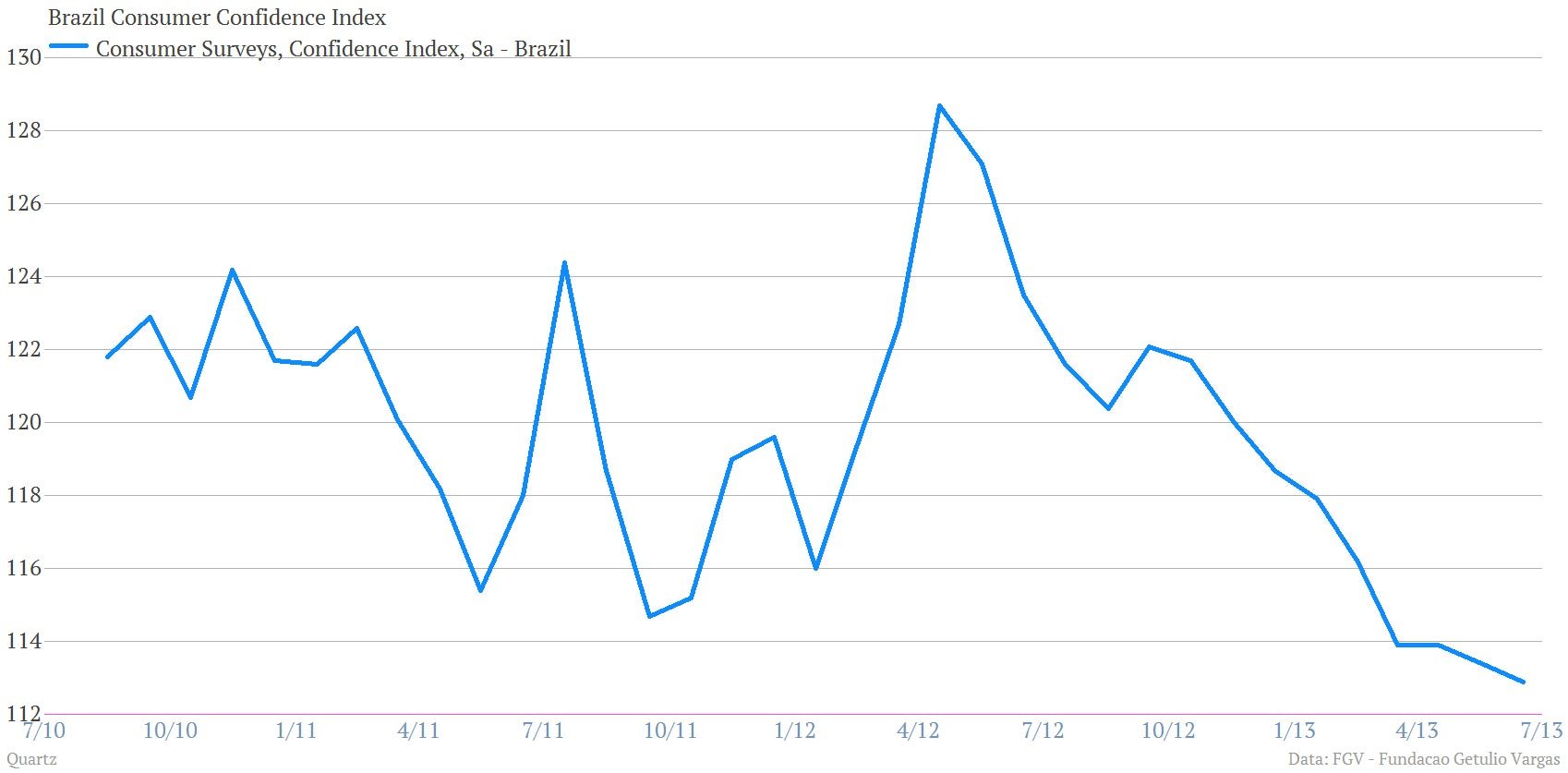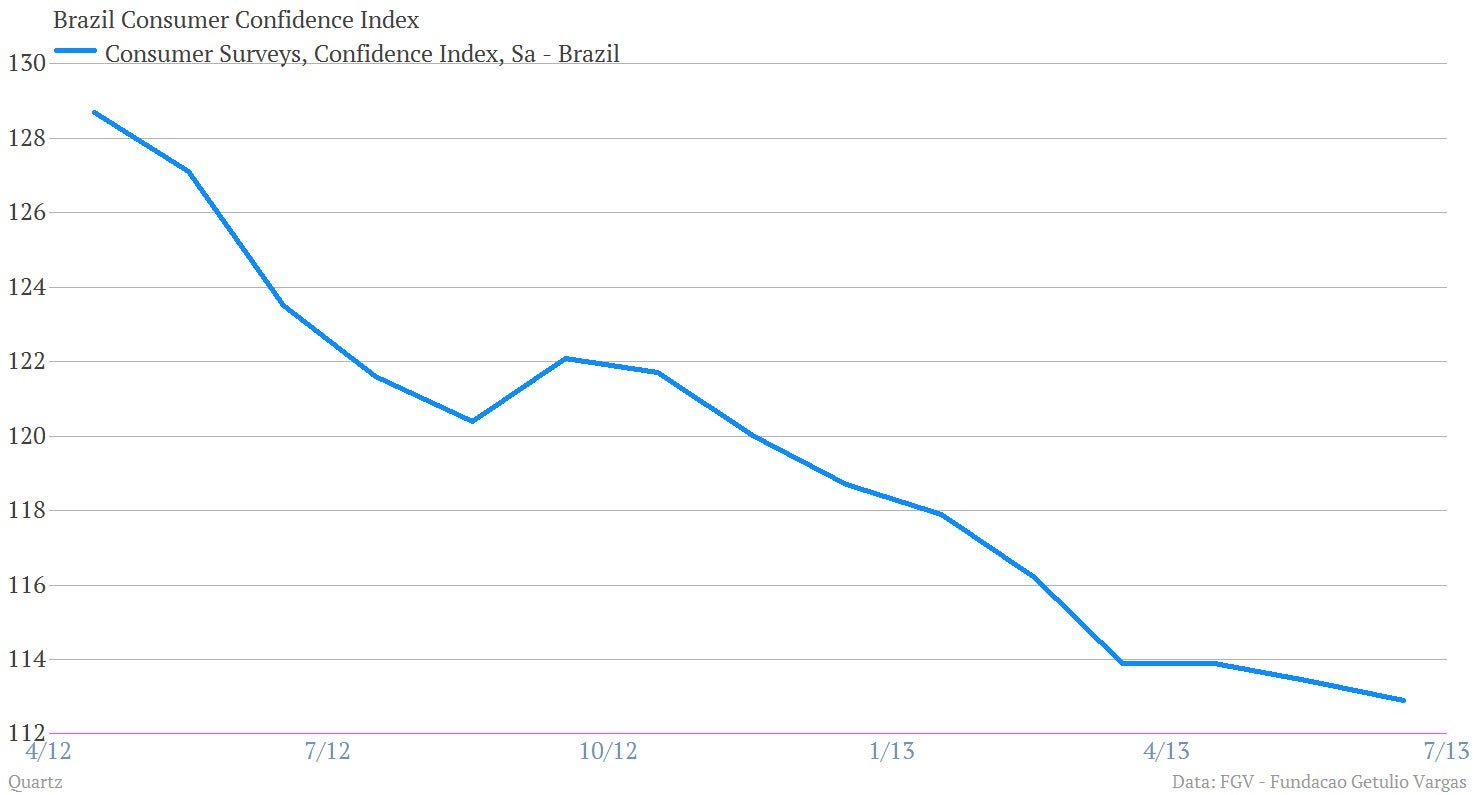It’s been three years since Brazilians were this down on their country
Life isn’t easy in Brazil these days—just ask Brazilians. The country’s consumer confidence index, which measures how optimistic people are about the economy and state of their own financial situation, just dropped to its lowest reading in three years.


Life isn’t easy in Brazil these days—just ask Brazilians. The country’s consumer confidence index, which measures how optimistic people are about the economy and state of their own financial situation, just dropped to its lowest reading in three years.

Over the past year, Brazilians have become especially pessimistic.

Brazil’s economy grew by a paltry 1% last year, and forecasts for 2013 are growing increasingly grim. GDP growth was just trimmed again, this time to 2.3%. Some believe that Brazil’s economy will grow by no more than 2% this year, which is especially troubling considering that only two years ago the economy was expanding at a more than 7% clip.
What’s going on?

Brazil’s problems are linked to the slowdown in China, the largest importer of Brazilian goods. The country is also heavily dependent on its service sector, which accounts for almost 70% of its GDP.
Lagging social development and rising prices have weighed on consumer confidence and fueled social unrest, as its recent protests showed. Brazil’s per capita income is still less than $12,000 a year, or 78th in the world. Meanwhile, inflation has hovered at the high end of and above the central bank’s target range of 2.5% to 6.5%, and will end the year somewhere near 6%.
Before the country’s controversial bus fare hike was reneged, residents of Sao Paulo had to spend as much as 26% of their income just to ride the bus. As the New York Times pointed out, the prices of basic items are becoming exorbitantly expensive. A large cheese pizza can cost almost $30, Samsung smartphones are nearly twice as expensive as they are in the US, some standard baby cribs cost $447 a piece, and cars are priced thousands of dollars above those in similar markets like Mexico.
Brazil’s protectionist policies and underdeveloped transportation infrastructure haven’t helped, nor have the country’s punitive consumption taxes. Alexandre Versignassi, an expert in Brazilian tax code, told the New York Times that companies in Brazil face some 88 federal, state and municipal taxes, and that many are passed on to consumers.